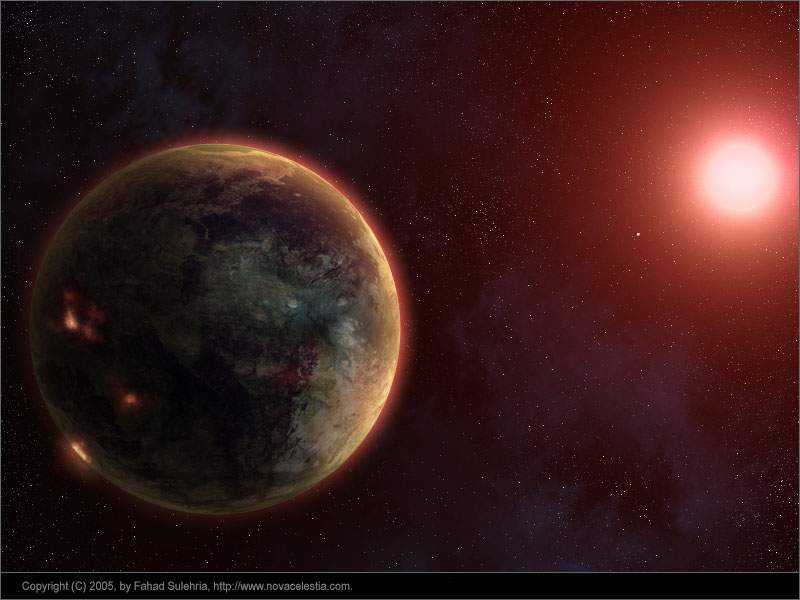2010 Geodynamics Seminar
CRUST: Planetary, Continental and Oceanic
2010 Geodynamics Seminar
CRUST: Planetary, Continental and Oceanic
Tuesdays, 1:30 - 3:00 p.m.
Carriage House, Quissett Campus
The crust of the earth is the most dynamic and complex geologic system on the earth. Although the crust of a planet is at the surface, it is often our only way to remotely study the geochemistry of planetary interiors, and has helped ground truth geophysical measurements of the earth’s interior. The Earth’s crust is unique in many ways among other planetary bodies, differences which will be highlighted in this year's program.
Organizers
Henry Dick, WHOI
Mark Behn, WHOI
Oliver Jagoutz, MIT
Andrew Daly, WHOI

Image: Nova Celestia
This planet might look like Earth, but it’s not. It is, however, the most Earth-like extrasolar planet found to date. It orbits the imaginatively named star GJ 876 and is located in the constellation of Aquarius, 15.2 light years away. It orbits its parent star at a distance of 3.2 million km, giving it a surface temperature of 200°C to 400°C.
(GJ 876, Fahad Sulehria, 2005)